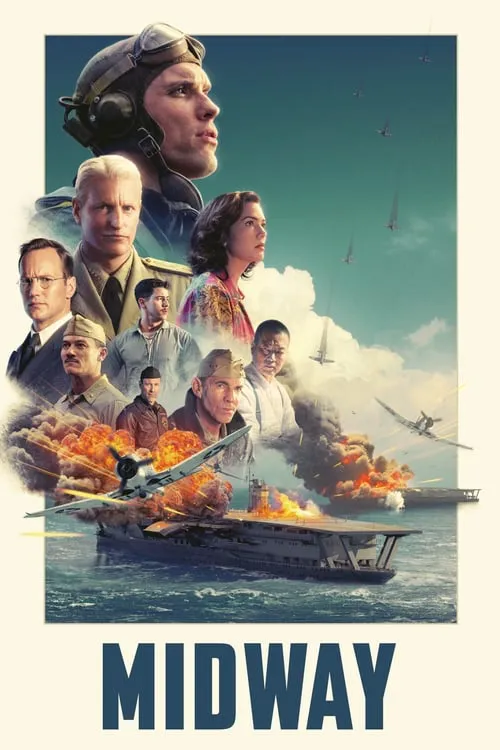Midway

Plot
In June 1942, the world was still reeling from Japan's surprise attack on Pearl Harbor just six months prior. The Imperial Japanese Navy had won a string of victories in the early months of the war, and the United States was reeling. The Japanese had set their sights on Midway Island, a small atoll in the Pacific that was a strategic hub for US naval operations. The Battle of Midway, which would prove to be a turning point in the war in the Pacific, was a culmination of months of planning by the Japanese, and a fierce determination by the US to defend the island. The Japanese Admiral Isoroku Yamamoto, the mastermind behind the attack on Pearl Harbor, had devised a plan to draw out the US Pacific Fleet and destroy it in a decisive battle at Midway. The US naval leaders, Admiral Chester Nimitz and Admiral Raymond Spruance, were aware of the impending attack and had been preparing for it. They had been analyzing Japanese radio signals, which included a famous encrypted message that had been decoded by US intelligence. The message, which was sent just hours before the battle, highlighted the Japanese intent to capture Midway and lure out the US Pacific Fleet. The battle began with a Japanese reconnaissance plane flying over Midway, which spotted the island's aircraft on the ground. The Japanese sailors excitedly radioed back to Yamamoto that the island was undefended, a report that bore a chilling resemblance to the intelligence they had received on Pearl Harbor. Buoyed by this information, Yamamoto ordered a large contingent of Japanese forces, including aircraft carriers and heavy battleships, to close in on Midway. Meanwhile, US Admiral Frank "Jack" Fletcher, commanding the US Pacific Fleet's Task Force 17, had received the warning from Nimitz that the Japanese were en route to Midway. Fletcher had dispatched his scout planes to intercept the Japanese, but he was nervous - he was leading a vulnerable fleet of carriers and fighters, with no air cover to speak of. Fletcher knew that if the Japanese could launch an air strike on the island, they would be able to take control of Midway, which would put the entire US Pacific Fleet at risk. Admiral Mitsuo Fuchida, the Japanese leader of the attack force, had been preparing his pilots for the battle ahead. He instructed them to target the aircraft on the ground, confident that this would pave the way for an eventual surrender of the island. The US base, they believed, was only lightly defended, and with their superior firepower, they were confident of a decisive victory. As the Japanese carrier air groups set off for Midway, the US embarked on a series of daring maneuvers to lure out the enemy. Admiral Spruance, in charge of Task Force 16, moved his USS Enterprise and Independence carriers farther away from the island, creating the illusion that he was abandoning Midway. The Japanese believed they had the upper hand, and Fuchida radioed his commanders back in Tokyo that he had achieved a significant victory, but then, to his confusion, he saw waves of US aircraft swarming towards him. US Avenger torpedo bomber planes from the USS Enterprise dive-bombed the Japanese carriers, hoping to sink them before they could launch a full air strike on Midway. But, after waiting for the launch of Japanese aircraft, these US bombers then found they had the advantage of hitting the launching aircraft on the deck. This resulted in the successful sinking of the four of the Japanese Akagi and Hiryu Japanese carriers. On the final day, Admiral Yamamoto had called off the attack on the island and instead turned all his ships towards Midway island in hopes of attacking whatever enemy forces were to be found on the ground. However it became apparent to Yamamoto that his force had experienced some severe casualties and, faced with uncertainty on the very presence of US forces and the certainty of losses to his ships and crew, decided to withdraw from the island. When the news of the successful US ambush reached the Japanese government, it marked a turning point in their fortunes in the war.
Reviews
Recommendations

